The Eland Antelope is a large animal, with a shoulder height of just under two meters, but it can weigh over a ton.
The Eland Antelope is considered the largest antelope species still existing on our planet. The name “eland” comes from Dutch, meaning “moose,” and this comparison is quite fair. Although the moose is slightly taller, the Eland Antelope is larger overall, with both species having comparable weights.
The Eland Antelope belongs to the spiral-horned antelope family (which includes Tragelophini, along with kudu, nyala, and bushbuck), and it is the only member of the genus Taurotragus. Genetically, it is closely related to the greater kudu, and in one instance, they were observed mating, producing a generation of infertile hybrids. Interestingly, the Eland Antelope is believed to have hybridized with livestock fairly frequently in Zimbabwe during the late 1800s and early 1900s, continuously producing infertile hybrid generations.
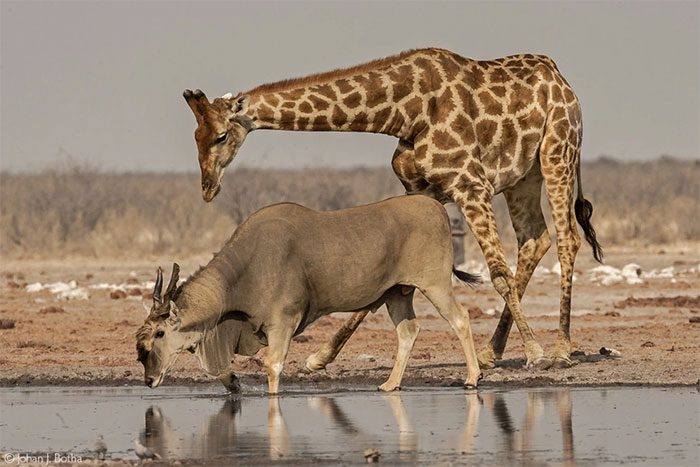
The scientific name of this antelope species is Taurotragus oryx. Here, “Tauros” refers to a bull, while “tragos” means goat. Oryx originates from “orux” in Middle English and Greek, meaning the pickaxe of a stoneworker. It is likely that “oryx” refers to the horns of this antelope species. The Eland Antelope is divided into two main subspecies – the common Eland and the giant Eland.
The coloration of this antelope species varies by geographical area, but they typically display a mix of reddish-brown and tan colors, occasionally featuring faint white stripes running along their sides. Males are darker, nearly dark gray as they become dominant individuals. Mature males develop hanging manes (similar to the bib of domestic cattle), which may play a role in regulating their temperature.
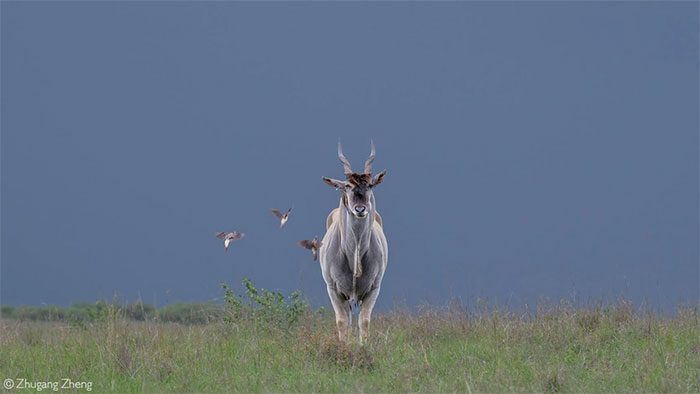
Eland herds can sometimes number up to 500 individuals. Despite their large numbers, they are not territorial or aggressive, even among males during the breeding season. These animals tend to wander from one location to another rather than occupying a single territory exclusively.
In fact, there are two recognized subspecies of the Eland Antelope: the common Eland and the giant Eland (also known as Lord Derby’s Eland). As one might guess, the giant Eland is generally slightly larger than the common Eland. However, the difference is not significant, and this name refers more to the size of the horns of the giant subspecies.
The common Eland is found in open plains throughout much of Southern Africa up to Ethiopia and the arid regions of South Sudan. The giant Eland is divided into Eastern and Western groups, with the former found in Cameroon, the Central African Republic, and South Sudan, and the latter located between Mali and Senegal. Externally, it is challenging to distinguish between the two subspecies, but the giant Eland has slightly longer legs than the other subspecies.
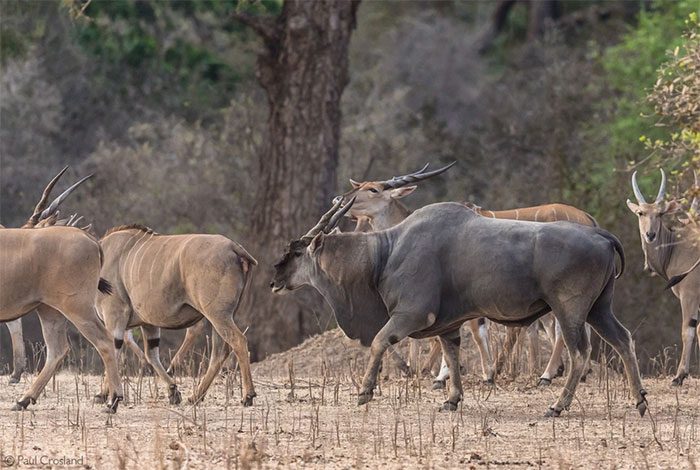
Although they are the largest antelope species in the world, they are an ideal meal for many large predators. Some typical predators that include them in their diet are lions, leopards, spotted hyenas, and wild dogs. Due to their substantial size, the only predators capable of hunting and consuming an adult Eland are actually leopards and spotted hyenas. Other predators primarily target the young.
The Eland Antelope is a migratory species (they do not have a fixed territory) and lives in shaded areas, often resting in the shade during hot days. This antelope is social with a linear hierarchy. Older males sometimes separate from the herd and live alone.
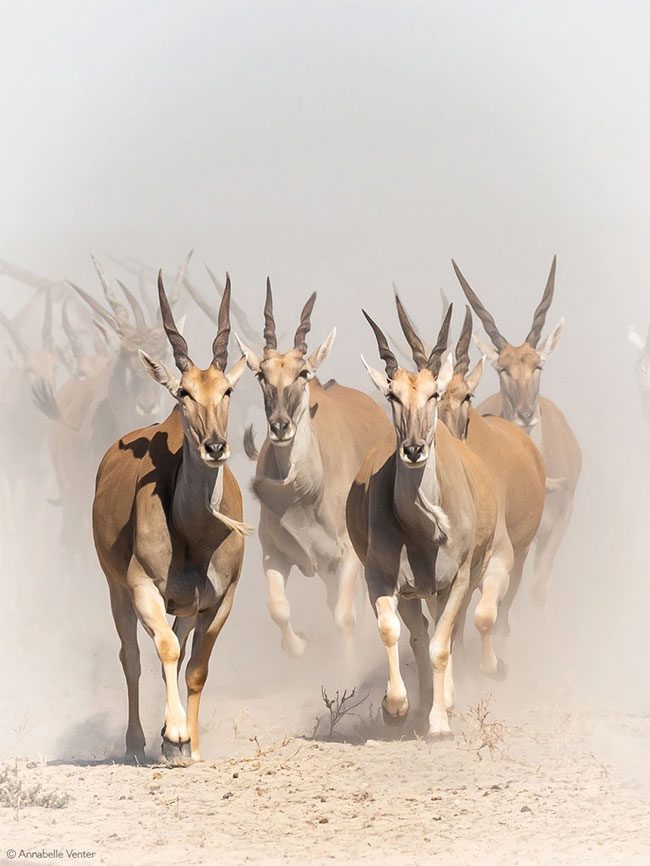
The Eland Antelope appears frequently in the folklore of many African tribes, especially the San people of Southern Africa, who often incorporate animal imagery into their rock art. There are several legends associated with the Eland, which often symbolize luck, freedom, bravery, and sacrifice. They are also closely associated with the sun, likely due to their light coloration, and are sometimes kept on farms for their milk and meat.
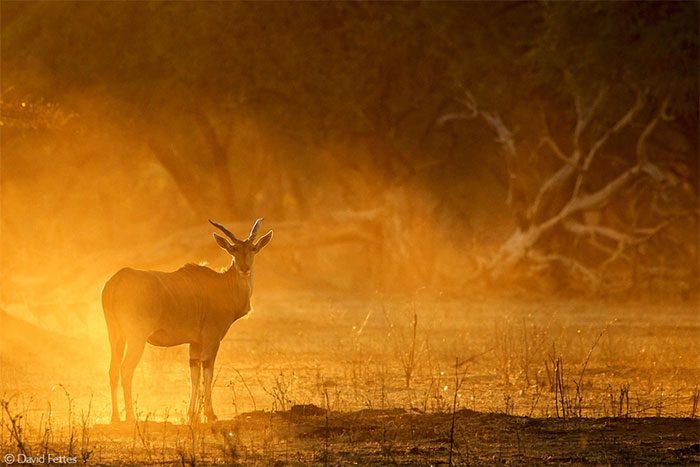
The Eland Antelope is a docile and easily domesticated animal. Females produce milk with higher fat and protein content than that of cows. These factors, combined with their innate resistance to many diseases and local parasites, make them an attractive livestock option for farms or small-scale ranching operations.
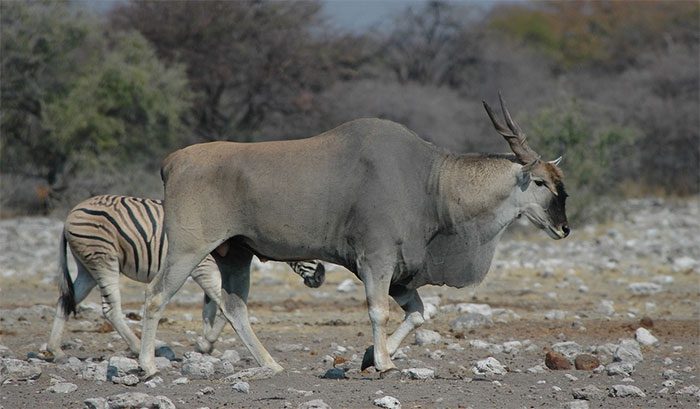
The diet of the Eland Antelope mainly consists of high-protein vegetation. Their preferred food is the leaves of flowering plants, but they are not picky eaters. They typically forage for anything available, from shrubs, grasses, and seeds. Currently, there are about 136,000 Eland Antelopes in the world, primarily found in Africa. Their population is stable, and the IUCN has designated their conservation status as “Least Concern.” The average lifespan of an Eland is 15-20 years. In captivity, some records indicate they can live comfortably up to 25 years.


















































